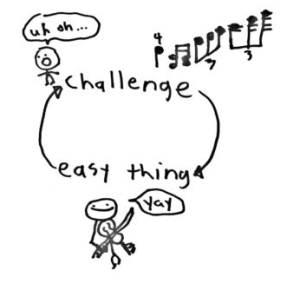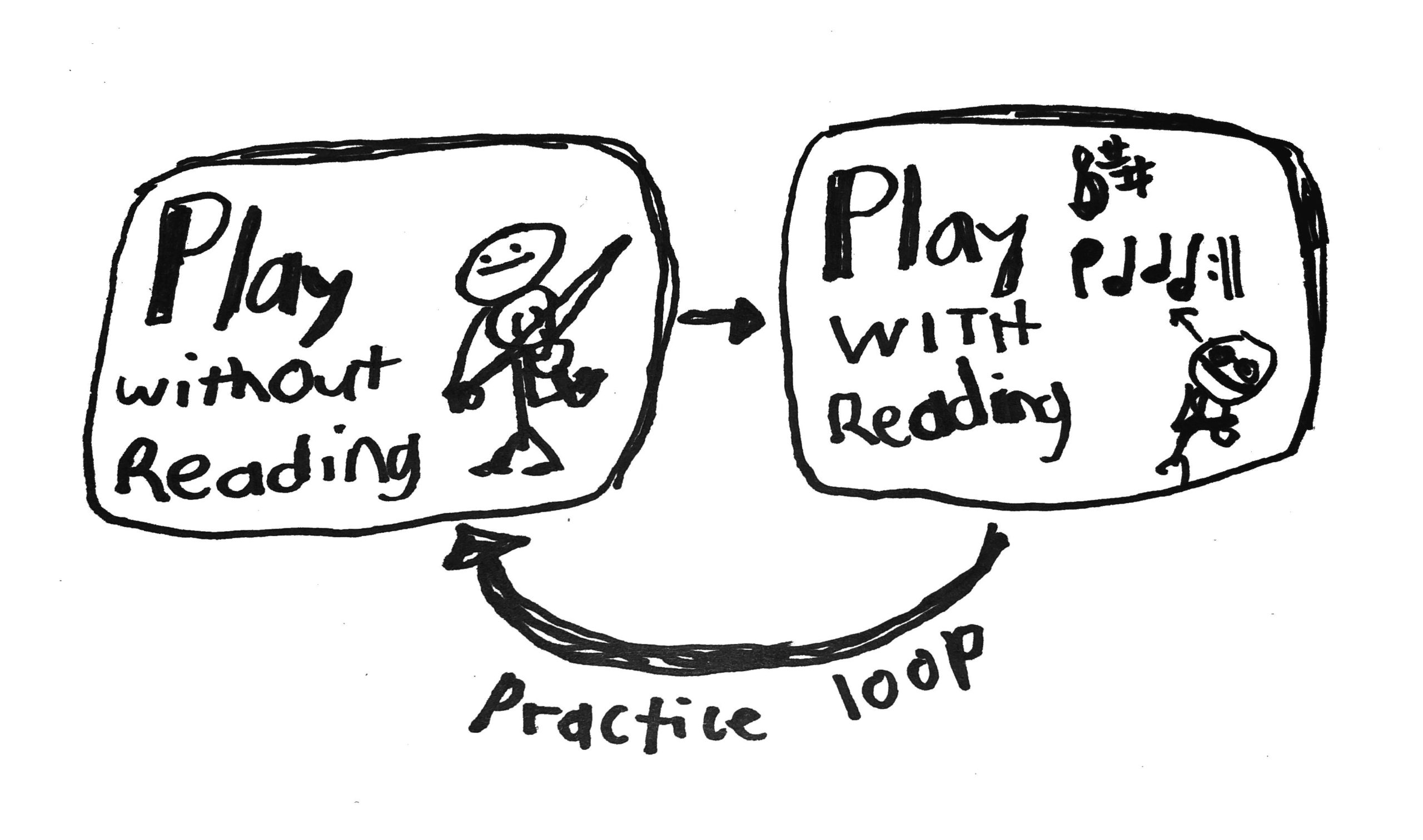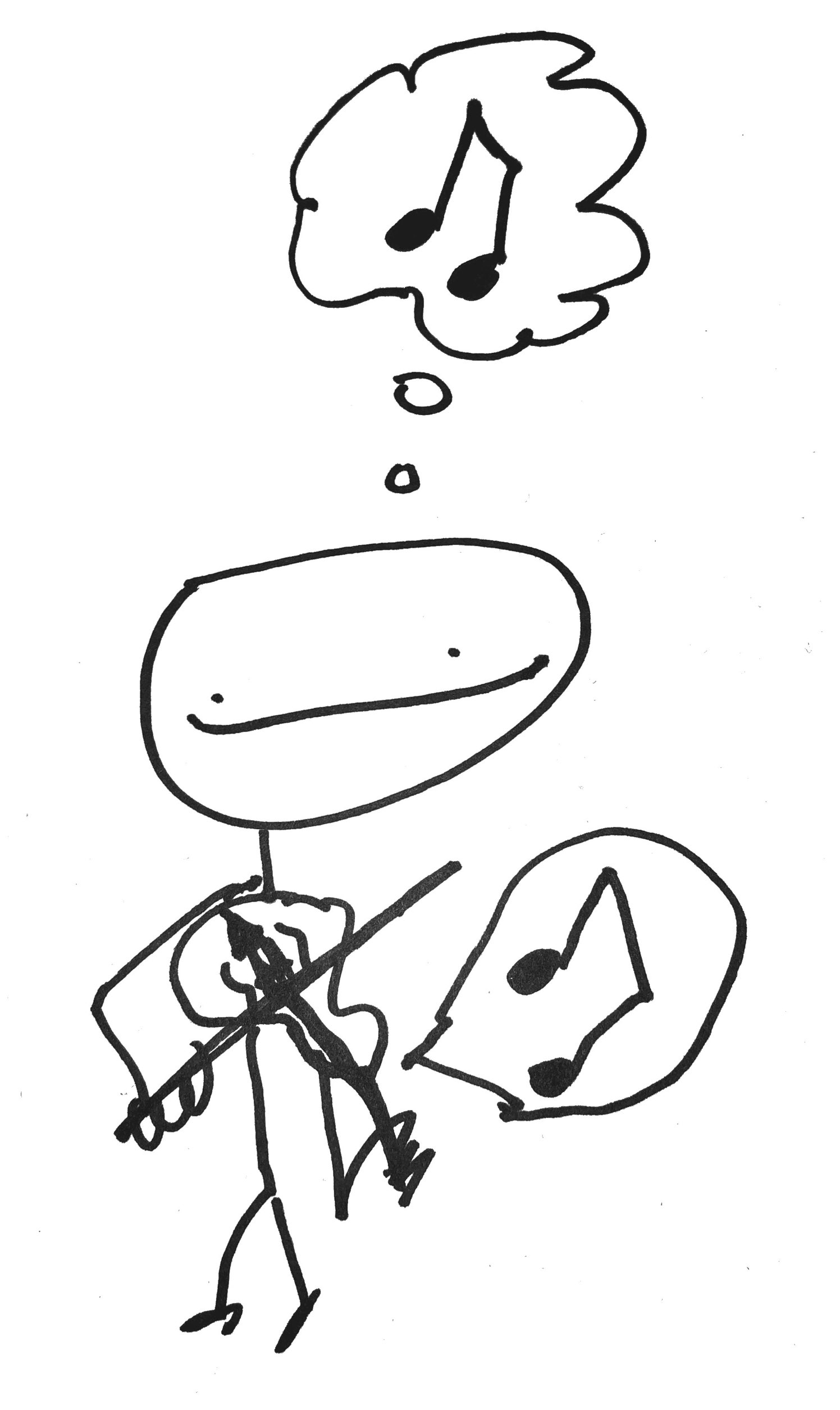Here’s a simple but extremely powerful practice strategy to develop your ear and improve your technique.
Take a small piece of music, and then alternate between listening and playing that piece. If possible, do it continuously in a loop. This practice is training you to listen constantly stop and listen. Do your best to make it a habit.
Let’s start with a beginner example.
- Say you’re trying to play A3 in tune. This is a D note.
- Use a D drone play along track.
- Listen to it for a bit, then play it on the fiddle. Adjust the note as best as you can.
- Stop playing and again, Just listen to the note. Perhaps close your eyes.
- Repeat the process.
- By pausing to listen, you give your full attention to what you’re trying to do.
- You can extend the practice by practicing intervals.
- So with the same example, practice A3-L2. Since A3 is the focus note, we use a D drone.
- If you want to tune up AL2 (which is C), then practice A3-L2 with a C Drone (C is now the focus note).
Each time you listen to a quality target performance, your brain is unconsciously learning how to do it. Each time you play, the body is learning how to do the task. Each time you return to listening, you better understand what needs to improve. During that listening period, the body has a short time to reset and then start again.
There’s often an impulse to keep pushing through with something. I feel it all the time. But when I pause to listen, I get a new perspective on what I’m doing. Things click, new knowledge sticks.
Practice this on a tune
Now let’s try this practice on a small piece of a tune. We’ll use Lazy John as an example.

- Listen to the first half of the A part.
- Then play it on the fiddle. Listen again, then play.
- If you use a play along track, then you can continuously cycle between listening and playing.
- But you can still do this practice, even if you don’t have “learning chunk” play along tracks. Just use an app like the Amazing SlowDowner or Anytune to loop on small parts of any audio recording.
- On the FiddleHed site, we’re starting to use video loops, which can also be used for this practice of alternating between listening and playing.
Further learning and practice
This lesson is part of a series called “Power Practice Habits” 💪🏽. I’ve started to take notes on all the little unconscious things I do when I practice. I’m trying to translate these strategies so that you and other fiddlers can also use them too.
Many of these strategies are based on the idea of a practice loop; alternating between something basic and something more challenging (or at least different).

For example, practice loops can be used to learn and practice note-reading.

Learn more about this in the Note-reading for Fiddlers course. And you can find more Power Practice Tips in the How To Practice Fiddling course. Here are a few related lessons to check out:
Hearing it in your head
“Audiation loops” is a similar practice loop to alternating between listening and playing. Audiation is the practice of hearing music in your head.
Practice a small piece of a tune, then visualize yourself playing it and hear it in your head. Actually “hear it in your head.” Continue to alternate in this way.
You can do this practice without any external audio. The amazing thing about audiation is that you can do it anywhere. So you can practice while waiting in the line at the supermarket. Yes!

Are you ready to begin your fiddle journey? I’ll send you some free lessons tailored to your current skill level.
Click here to become a FiddleHed!


I’m just so grateful for this lesson; it’s exactly what i needed. Cheers man.
Since you said you’re always looking for new stuff/feedback, are you at all familiar with the neuroscientist Andrew Huberman?? The stuff his lab has found regarding learning and neuroplasticity is fascinating, and mirrors much of what you advocate.
Thanks Jeff!